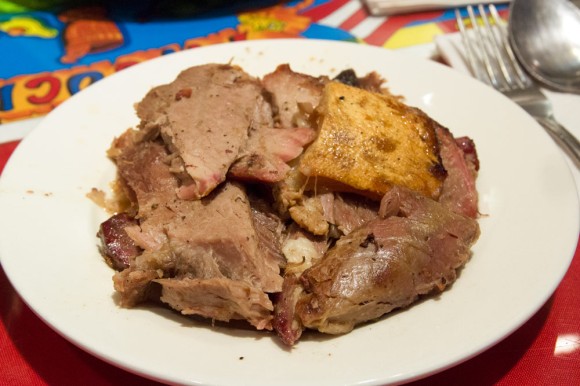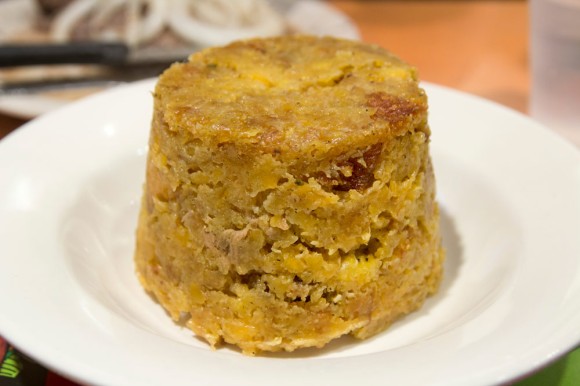
A while back—when it was still cold out, of course—I decided it’d be a good idea to hop on an early-morning Chinatown bus to Philadelphia. I had no plan, nor anything to dabble in, so I ended up spending the whole day wandering. In the midst of those wanders, the wind got to me: my fingers and toes went numb, and so I decided to pop into some random supermarket to warm up (and gawk at food). It was there that I found these pretzels.
As a reflex, I pick up every bag (or tub, in this case) of chocolate-covered pretzels I see—and with the exception of Vermont Nut-Free’s, I’ve never come across one without a “may contain” warning for tree nuts. But as you’ve probably predicted, this tub of pretzels was unlike those others. It had no such warning, so I had no choice but to take it home.
In general, I’m one to go by labels. Unless I’ve found some specific cause for concern—the product in question is particularly high-risk, or it’s coming from a teeny-tiny company that makes a bunch of nut-containing products, too—I’ll dig right in to any packaged good whose label has no mention of tree nuts. I do that knowing full well that companies aren’t required to label for shared facilities, shared lines, etc., because…well, I’m just not a company-caller. (Many are—and if you got all your impressions from food allergy–themed online communities, you’d think that most were. But I really doubt the practice is all that widespread, especially among those who haven’t self-selected into allergy-related Facebook groups.)
The way I see it, if I adopted a set of food-safety standards so high that they required me to always confirm that a product comes from a nut-free facility before allowing myself to eat it—and if I were to really abide by that rule, and carry it out to its logical conclusion, which is some sort of obligation to make sure everything I put in my mouth is, as far as I can tell, free from all possible cross-contamination—I’d soon find that my standards were not only impossible to meet, but that they’d necessarily lead to something like a near-infinite regress of uncertainty, too. [Here, I will—for the first (and hopefully last) time—share a meme on this blog.]
Think about it. There’s just no way to confirm that a product is safe. What if the employee I spoke with was wrong? What if Nabisco has told me that my graham crackers come from a nut-free facility, but they don’t mention (or even know) that the flour that’s gone into those same graham crackers was itself processed on shared lines? What if a factory worker ate some almonds with his lunch? And what if I want to eat out? Am I going to ask a restaurant to provide me with a list of every single product that’s gone into my dish, and then proceed to call each and every one of those manufacturers before deciding whether to order? And what about that manufacturer’s suppliers?
Fuck no. All food comes with risk. I’ll survive. (Plus, my allergist’s on my side. So take that.) [Edit: For more on all this, read the comments on this post.]

That all said—and yes, this whole post is just an excuse for the above demi-treatise—I did contact Herr’s about these pretzels—not as a precaution before eating, but as a precaution before sitting down to write this blog post. (Seems weird to throw a product post together without having spoken to the manufacturer. No matter how comfortable I feel at a restaurant, I wouldn’t publish a post on it without having gotten some summarizable allergen information out of one or two of its employees…or its website, I guess.) And eventually, I was able to find out that these chocolate-covered pretzels are, in fact, nut-free.
Originally, I was told (via email) that these particular chocolate-covered pretzels are made in a nut- and peanut-free facility, but that obviously wasn’t true, given that the label has a “may contain” statement for peanuts. I replied and said as much—and then, a day or two later, I got an unexpected phone call from a very apologetic (and very, very informed) Herr’s employee who’d evidently been tasked with setting the record straight. So: These pretzels—the ones that come in the red tub pictured at the top of this post—are made in a tree nut–free facility that does indeed handle peanuts, and they should be 100% safe for those with tree nut allergies.
By now, it’s beside the point, but the pretzels themselves are fine. They’re just about what you’d expect, really: thin, sour-ish pretzels, covered in a fair amount of sub-par “chocolate.” (It isn’t actually chocolate, but rather a chocolate-flavored coating.) They’re nothing to go out of your way for, but they’re nonetheless palatable. And even though they’re a little on the expensive side, they’re certainly less bank-breaking than Vermont Nut-Free’s. I don’t love them, and I’m not sure I’d buy them again, but…they’re chocolate-covered pretzels, and they’ve temporarily relieved me of my craving. I don’t ask for much more.
Anyway. I’m not actually sure where you can find these pretzels. (Remember: excuse, demi-treatise.) They aren’t listed on the Herr’s website, nor can I find much of anything about them online. With regard to potential allergens, the pretzels that come in the above-pictured red bucket aren’t necessarily the same as any of the other chocolate-covered pretzels sold by Herr’s. Rest assured, though, that these do exist, and that they (in particular) are safe.
They’re out there. I swear.












